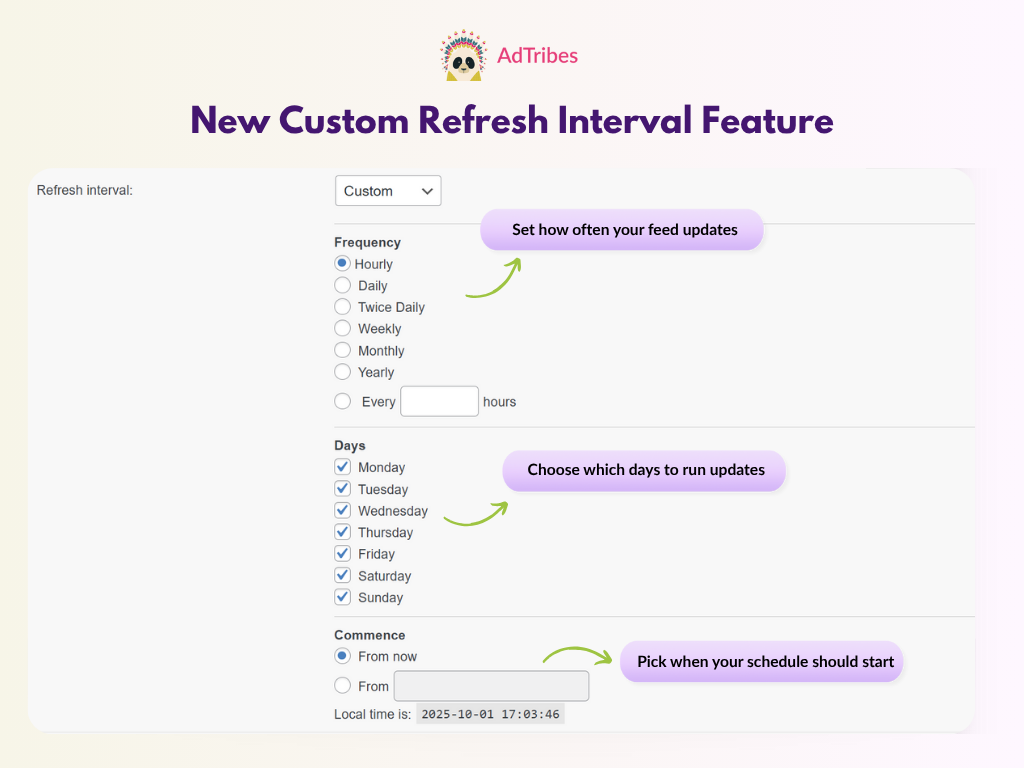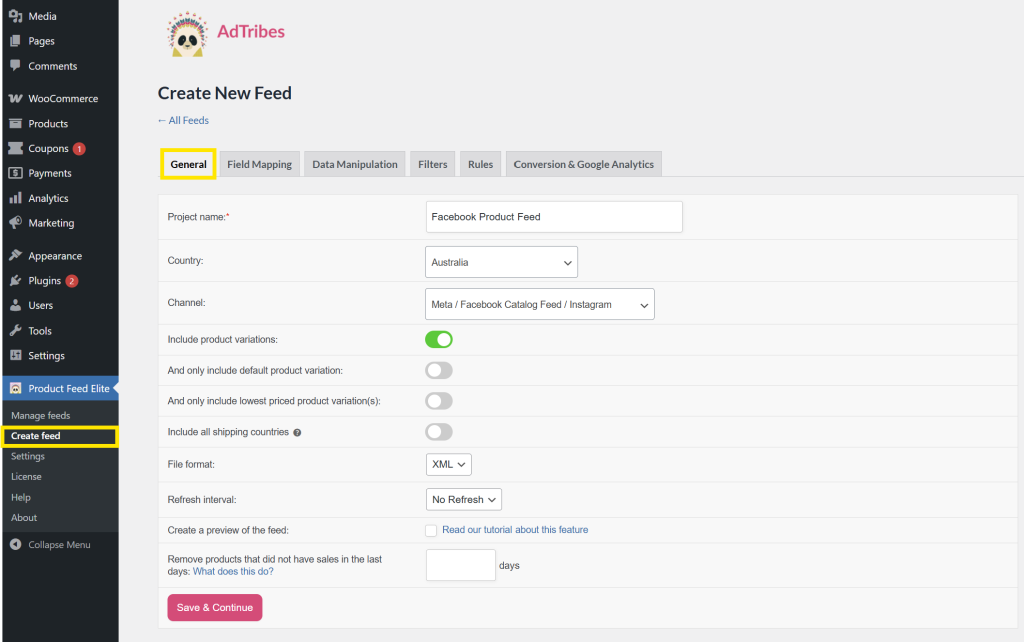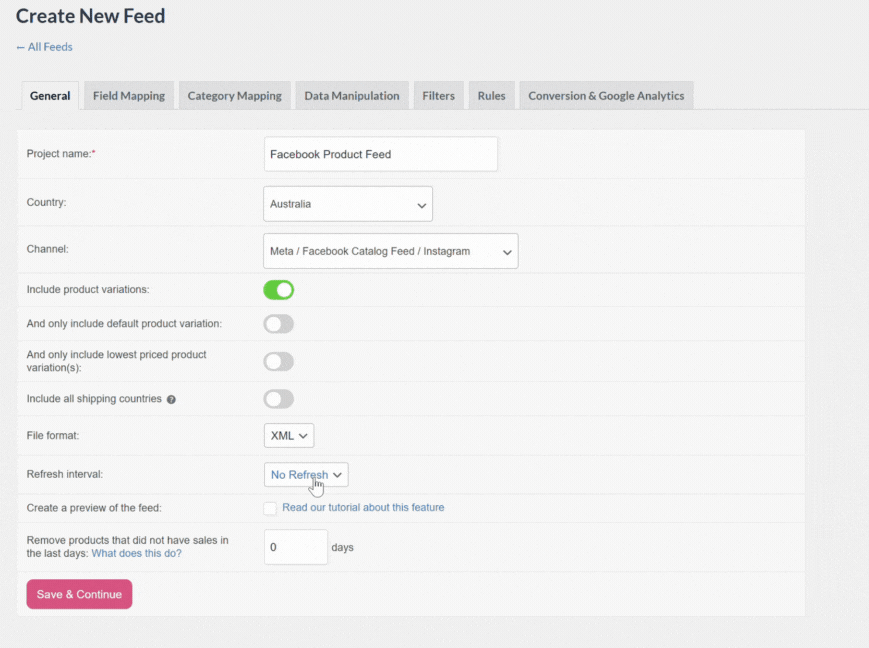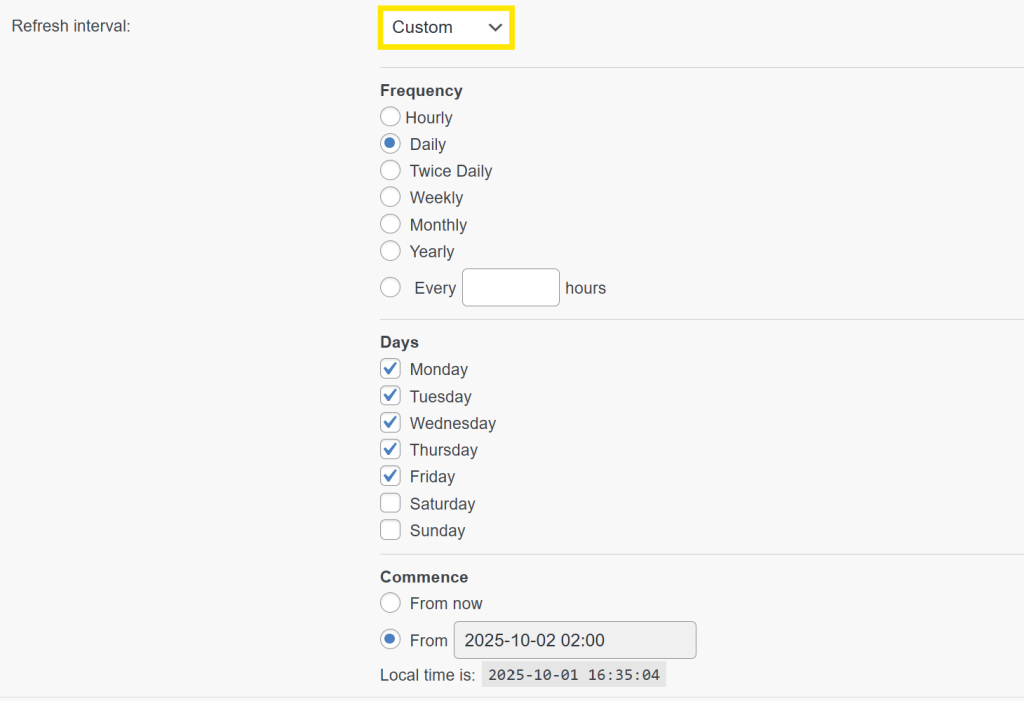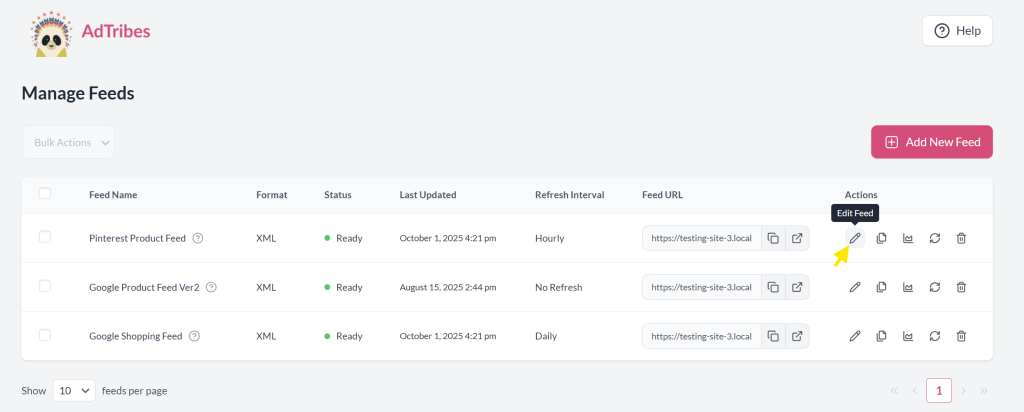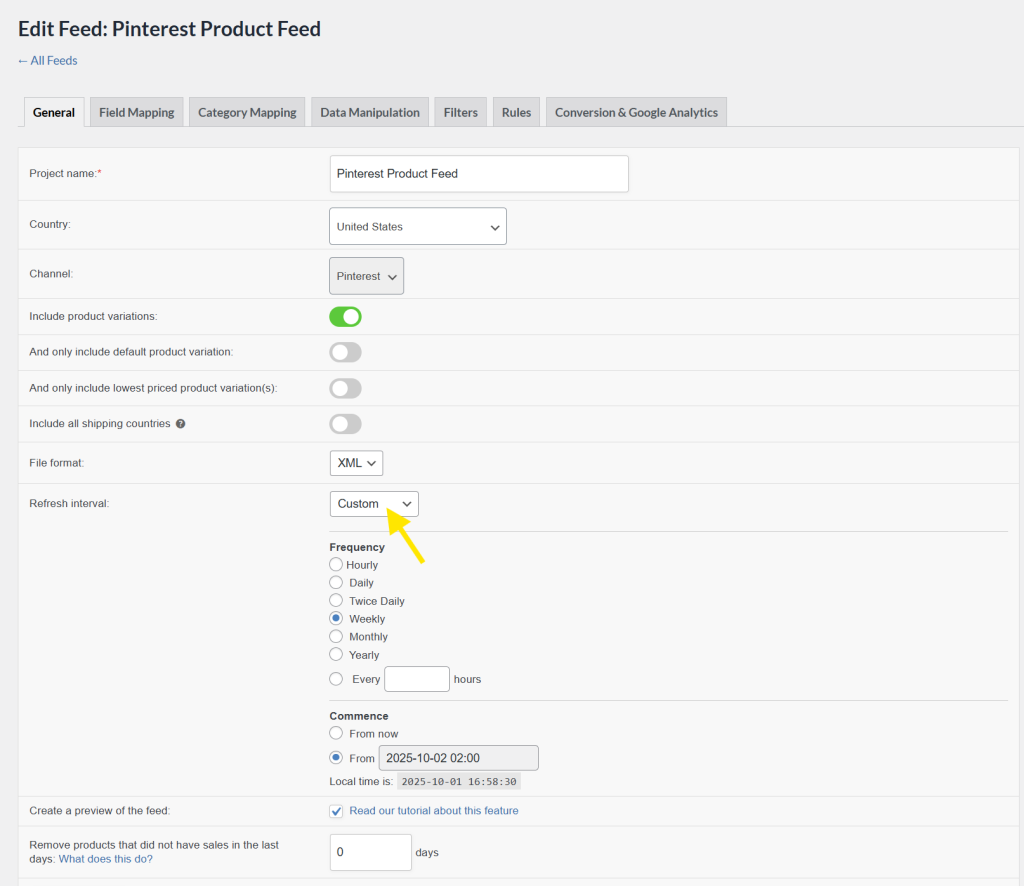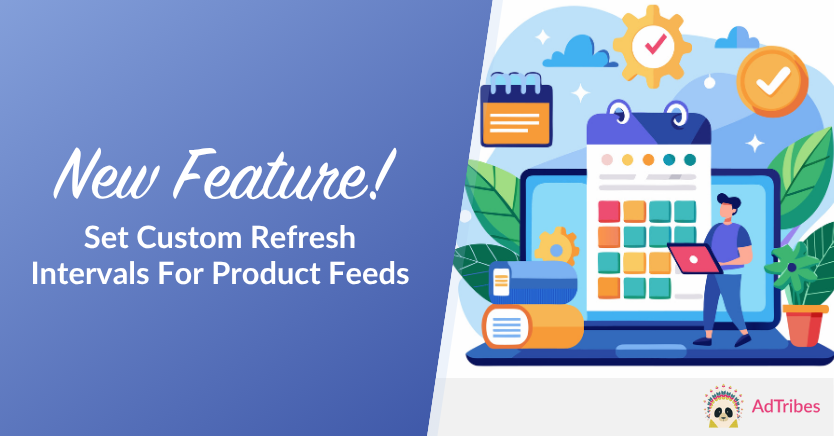
Exciting news for store owners! 🎉 We’ve just released one of our most requested features for AdTribes: custom refresh intervals for product feeds. Now, you can schedule product feed updates exactly when they make the most sense for your store. This unlocks next-level flexibility, control, and efficiency for your WooCommerce product feeds.
In this guide, we’ll walk you through what custom refresh intervals are, why they matter, and how you can set them up in just a few clicks.
Let’s get into it!
- I. What Are Custom Refresh Intervals For Product Feeds?
- II. Key Benefits Of Custom Product Feed Scheduling
- III. How To Set Up Custom Refresh Intervals For WooCommerce Product Feeds
- IV. Tips And Best Practices
- Wrapping Up
I. What Are Custom Refresh Intervals For Product Feeds?
Refresh intervals refer to how often your product feed is automatically updated to reflect the latest changes in your store (think price adjustments, stock availability, or new listings). Setting this ensures that your listings across platforms like Google Shopping, Facebook, and Pinterest always stay accurate and up to date.
Most product feed tools offer fixed refresh interval schedules, such as daily, hourly, or weekly. However, this can be limiting for businesses that operate on non-standard hours or run frequent marketing campaigns. That’s exactly why we built the custom refresh interval feature: to give you full control over product feed scheduling.
Custom refresh intervals let you choose exactly when and how often your product feeds update.
Now, you can:
- Set your own feed refresh frequency (e.g., every 3 hours, every 2 days, etc.)
- Pick specific days of the week when the feed should refresh
- Schedule exact start times, like 11:00 PM or 6:00 AM
This means that you can schedule product feed updates to align exactly with the needs of your store.
II. Key Benefits Of Custom Product Feed Scheduling
Let’s go through some of the key benefits this feature can bring to your store:
1. Full control over product feed scheduling
You’re no longer tied to rigid feed update options like “daily” or “hourly.” This level of control is important for businesses with international clients, frequent inventory updates, or time-sensitive promotions. For instance, if you typically update inventory on Fridays, you can schedule product feeds to refresh shortly after to ensure listings reflect the latest stock and prices.
2. Improved store performance
Product feed refreshes can strain your website’s resources, especially if they run during peak shopping times. This can cause slower load times that potentially lead to cart abandonment.
Custom product feed scheduling allows you to optimize when these updates happen, so you can give shoppers the best experience. By scheduling product feed refreshes during low-traffic times, you can avoid unnecessary slowdowns while keeping your listings up to date. This is especially important if you have a large product catalog or are running several feeds for different sales channels.
3. Better alignment with marketing and promotions
Timing and visibility are everything when you’re running promotions like flash sales and seasonal campaigns. By setting custom refresh intervals for product feeds, you can align feed updates exactly with your marketing calendar. This ensures that your product data (like sale prices and stock levels) is up-to-date across all sales channels.
4. Easier feed management
Custom refresh intervals simplify feed management by giving you complete control over your feed schedules. Now, you can create tailored refresh intervals for each feed—based on the channel it’s used for, your current promotions, or your inventory update cycles.
With AdTribes, all your feeds are managed in one central dashboard, so you easily edit and adjust your feed schedules without switching tools.
III. How To Set Up Custom Refresh Intervals For WooCommerce Product Feeds
Setting up custom product feed scheduling is easy with AdTribes. Once configured, your feeds will automatically update based on the settings you choose. You can access this feature both for new and existing product feeds.
📝 NOTE: The custom refresh interval feature is available in AdTribes Product Feed Elite. Before following along, make sure that you have updated to the latest version of AdTribes Product Feed Elite.
With that out of the way, let’s get into the steps!
Setting custom refresh intervals for new product feeds
To create a new product feed, head to Product Feed Elite > Create Feed. This will take you to the product feed creation screen. Set up your feed as usual by filling in the basic feed details under the General Tab:
To set a custom refresh interval, find the Refresh Interval dropdown and select Custom.
From here, you can configure custom settings:
- Frequency: How often should the feed refresh?
- Days: Choose specific days of the week for the refresh to occur
- Start Time: Set the exact time when the refresh schedule should begin
💡 In the example above, we’ve set our product feed to refresh daily at 2:00 AM on weekdays only. This kind of setup works well for stores that want to run product feed updates during low-traffic hours. Scheduling feed refreshes in the early morning also ensures listings are updated before customers start browsing for the day.
After configuring your custom schedule, you can continue setting up your feed as usual. This includes applying filters and rules, mapping fields, and enabling conversion tracking.
Once you’re done, click “Generate Product Feed” to complete the setup. That’s it!
New to product feeds? Check out our detailed step-by-step guide on how to create a WooCommerce product feed here. 👉

Setting custom refresh intervals for existing feeds
You also have the option to set custom schedules for existing product feeds. To do this, head to Product Feed Elite > Manage Feeds. From the Manage Feeds dashboard, choose which feed you want to update and click Edit.
Under the General Tab, find the Refresh Interval setting and select Custom to unlock advanced product feed scheduling options. From here, you can choose your preferred frequency, days, and start time that work best for your store:
Don’t forget to click “Save Changes” to apply your new schedule!
Your feed will automatically start following the updated timing from the next scheduled refresh.
💡GOOD TO KNOW: AdTribes gives you the flexibility to set custom refresh schedules for each individual product feed. Make the most of this feature by tailoring each feed’s schedule to its specific platform or campaign. For example, setting early morning updates for Google Shopping and evening updates for Facebook campaigns to make sure your product data is always fresh when your audience is most active.
IV. Tips And Best Practices
To help you make the most of this new feature, we’ve laid out some helpful tips and best practices below:
- Avoid peak shopping hours: It’s best to schedule feed updates during off-peak hours (like early mornings or late nights) to minimize their impact on store performance.
- Align feed refreshes with your promotional calendar: Schedule feed refreshes to reflect time-sensitive promotions like flash sales or seasonal discounts. This helps ensure your listings reflect the latest pricing and stock availability across all platforms.
- Don’t refresh more than necessary: While you can schedule product feeds to run as frequently as hourly, it’s not always the most efficient option. Instead, it’s smarter to choose a refresh schedule that matches your inventory turnover and campaign goals. Depending on your business, this might mean updating a few times a day, once daily, or only on certain days of the week.
- Update schedules when needs change: Revisit your current setup whenever your store operations or marketing strategy changes. With AdTribes, you have full flexibility to adjust product feed refresh intervals at any time, so your setup can grow with your store.
Wrapping Up
Our newest custom refresh interval feature gives you next-level control and flexibility over your product feeds. Now, you can set exactly when and how often your product feeds update, ensuring that your listings are fresh and updated across every channel.
Here’s a quick recap of what we covered in this guide:
- What custom refresh intervals are and how they work
- Key benefits of this feature for store owners
- How to set custom schedules for new and existing feeds
- Tips and best practices to maximize this feature
Do you have any questions about this new feature? Let us know. We’d be happy to help!
